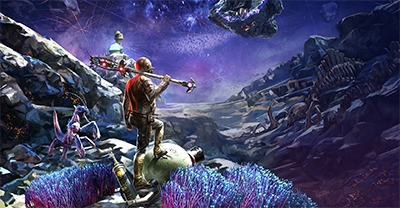
The Outer Worlds: Peril on Gorgon DLC Review
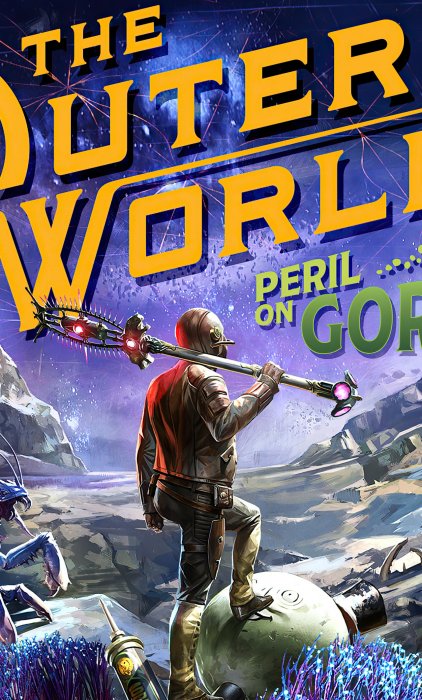
Pros
- Branching storyline with multiple endings.
- Dark, engrossing story... even if you have to dig a bit to find it all.
- Sam streamlined but effective RPG mechanics as the original.
- No forced online components or microtransactions.
Cons
- Same simplistic combat as the original.
- Recycled enemies, weapons and interiors.
- Level/skill/perk additions don't change much.
At the end of The Outer Worlds (check out our review!), we couldn’t help but want to explore more of Halcyon in all its dystopic glory. Nearly a year after the release of The Outer Worlds, developer Obsidian Entertainment finally followed up with one of the two promised DLC - Peril on Gorgon. Taking place sometime after the events on Monarch, but before the penultimate showdown on Tartarus, Peril on Gorgon is a relatively high-level campaign only suited for veterans of the base game (the DLC announces itself as an adventure for characters level 25 or higher).
Upon traveling anywhere in the Halcyon colony in your trusty spaceship, the Unreliable, you’ll have some hazardous postage delivered to your - or rather, Captain Hawthorne’s - ship, to peruse at your leisure. The contents, a Phonograph from one of Captain Hawthorne’s associates, Lucky Montoya, will ultimately lead you to Gorgon, where the bulk of this DLC content takes place. The game’s main questline revolves around the Ambrose family and their legacy, which was tarnished by the failure of the Gorgon Project, although, as is par for the course in Obsidian Entertainment’s games, there’s more under the surface than is initially apparent.
While the Ambrose family drama is the framework around which the story is built, there much more to this narrative if you’re willing to search for it.
In addition to the main questline there are several side quests that range the emotional gamut from finding an item of sentimental value for a woman whose husband got caught up in the Gorgon Project’s demise to helping some smugglers resolve an argument about whether a fossil is the llama-shaped landmark they’re looking for. Yes, from the very moment that Lucky Montoya strong-arms himself onto the Unreliable and has a hand in getting you the job that leads you to Gorgon, Peril on Gorgon is indulging in the not unwelcome, corporation-mocking absurdity showcased by the main game, but the levity belies a darker, more poignant narrative that flows throughout the DLC.
While the Ambrose family drama provides you motivation and serves as a framework for virtually every story beat in the DLC, without seeking out the optional phonographs and terminals that reveal the fall of Project Gorgon the overall story of Peril on Gorgon is much less profound. With these optional bits of lore, the main story beats of corporate malfeasance and inter-generational antipathy bloom into a tale of a catastrophic, cascade failure caused by top-down corporate immorality and exacerbated - repeatedly and fatally - by the more personal failures of otherwise brilliant minds who for various reasons didn’t do enough to check the crushing, subversive power of a fundamentally broken system. Many of the story beats from the original game are echoed here, especially those that detail the effects of corporate dystopia, of how a supposedly amoral, profit-and-statistics-driven bureaucracy can end up acting profoundly and unjustifiably immoral. Not since Bioshock have we seen a better story told primarily through abandoned recordings and text, and you’d do yourself a great disservice by not going out of your way to find these precious scraps of lore, as they do much to buoy the otherwise merely competent tale told by the DLC’s main and side quests.
The outdoor areas of Gorgon provide new sights, but the interiors are overly familiar.
The bulk of Peril on Gorgon takes place, of course, on the remote asteroid Gorgon, which is a fairly sizable “open-world” area comparable to, say, Roseway. Gorgon features a small “civilized” area (little more than a landing pad, shop, and bar frequented by salvagers) and a hostile overworld area, but Project Gorgon’s many facilities (some of them quite large) account for much of new playable area. In addition you’ve got some new areas off of Gorgon that the story will pull you to, including a new deck on Groundbreaker, a new estate in Byzantium, a mercenary ship and, largest of all, an installation orbiting Olympus. All in all, there’s a lot of new ground to cover, and if you take your time, search every nook and cranny and complete every side quest you can expect around ten hours of gameplay.
Peril on Gorgon is indulging in the not unwelcome, corporation-mocking absurdity showcased by the main game, but the levity belies a darker, more poignant narrative that flows throughout the DLC.
There’s plenty of play-time on offer for the $14.99 asking price, the novelty of the content - story aside - is less laudable. Gorgon has a somewhat different aesthetic than the other planets and asteroids you’ve visited, but the interiors - comprising much of the DLC’s content - are overly familiar by now. Exacerbating this is the fact that there are no new enemies in Peril on Gorgon, discounting palette-swapped elemental variants of Primals and Mantids, and a new automechanical drone that heals enemies. You’ll largely be dealing with the same automechanicals, marauders, and fauna you’ve fought throughout Halcyon, and while there’s a new tier of weapons you can get your hands on, these are just numerically-incremented variants of gear you’ve already seen two iterations of. At least the new unique weapons - of which there are plenty of - occasionally deviate functionally from the norm… although not all of these novelties are terribly useful.
You’ll largely be fighting the same enemies using the same tactics as in the original game.
Gameplay in The Outer Worlds, while serviceable enough, was always fairly limited, and while it was arguably sufficient to carry the relatively short campaign of the original game, adding a few extra hours without any significant additions or innovations does inject some tedium into the core gameplay loop that wasn’t quite as pronounced in the original game. You still have Tactical Time Dilation (TTD) to slow down time, and depending on your skill point investments, you may be able to command your companion to unleash a unique companion ability, which are the only two options you have once combat has started aside from directly attacking with one of the up to four weapons you can have ready at a time.
Fortunately, combat isn’t always a foregone conclusion, as you can usually make use of various skills to bypass battles entirely, or at least shift the odds in your favor a bit before you do engage. These options typically include making use of various Dialog skills (Persuade, Lie or Intimidate) to talk your way out of trouble or Stealth skills (Sneak, Hack, Lockpick) to assassinate, deactivate or otherwise bypass foes. Sadly, however, the Holographic Shroud doesn’t make an appearance this DLC, so if you were expecting one of the main game’s infiltration segments to make an appearance, you may be disappointed.
Gorgon has a somewhat different aesthetic than the other planets and asteroids you’ve visited, but the interiors - comprising much of the DLC’s content - are overly familiar by now.
Variable difficulty levels, modifiable and upgradable weapons and armor, elemental damage types which are more or less effective against different enemies, and an inhaler that can mix up to four different consumables to provide an array of buffs and debuffs are all still present in Peril on Gorgon and help round out the experience, but how many of these you’ll be able to use and to what extent you’ll be able to utilize them depends largely on your build. The Outer Worlds is an RPG, first and foremost, and while the gameplay loop may not have evolved in Peril on Gorgon, the core RPG mechanics were already rock-solid enough to potentially benefit from mere iteration.
Peril on Gorgon features a higher level cap, skill cap and new perks.
To that end, the level cap has been expanded to 33, another tier of skill mastery has been added (you can invest up to 150 points into a single skill to obtain Virtuoso rank) and two new perks per tier (six in total) are now available, although the results of this, too, are a bit of a mixed bag. The higher level cap only grants a paltry thirty Skill Points, which is nowhere near sufficient to make up for the new top-tier skill checks, much less to warrant investing 150 points into any single skill to hit the Virtuoso mastery rank. What worked in the original game will get you through Peril on Gorgon well enough, as investing 60 points into Inspiration to maximize the skill point gains your companions give and bringing along whatever companion(s) you need for the task at hand will allow you to pass whatever skill check pops up, but it is a bit of a shame that, in our experience, all the aforementioned additions brought by Peril on Gorgon really just amounted to a handful of skill points, one or two relevant perks, and the ability to upgrade our weapons and armor a bit more. Optimistically, there’s hope we could see things expanded in a more interesting, meaningful way in the future, but for now, Peril on Gorgon doesn’t shake things up much.
There’s a great story you can unearth on Gorgon if you’re willing to dig for it, and the more phonographs you uncover and the more terminals you pour through, the better the overall experience will be. If you enjoyed The Outer Worlds and wanted more of it, Peril on Gorgon delivers, and there’s just enough content and at a good enough price point to justify the expense. If you were hoping for a DLC that would significantly expand on the base game, or felt the tedium building with any of the aspects of the original, Peril on Gorgon might not be what you’re looking for.
Good
Peril on Gorgon is more of the same, more The Outer Worlds, for better and for worse.
Gameplay:
Sound:
Graphics:
Story:
Value Rating:

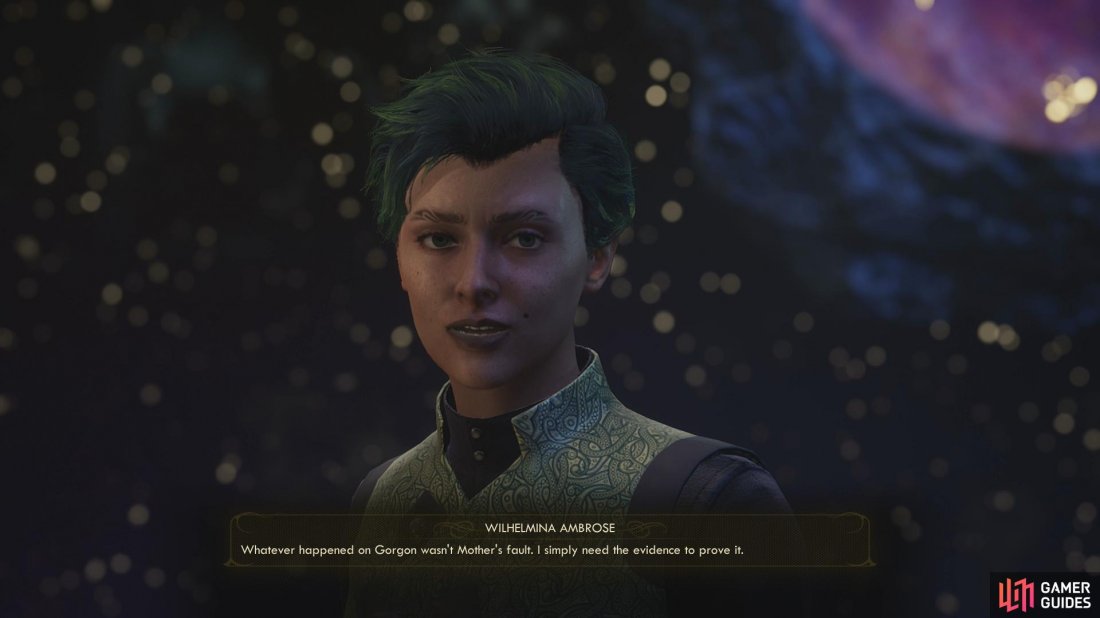
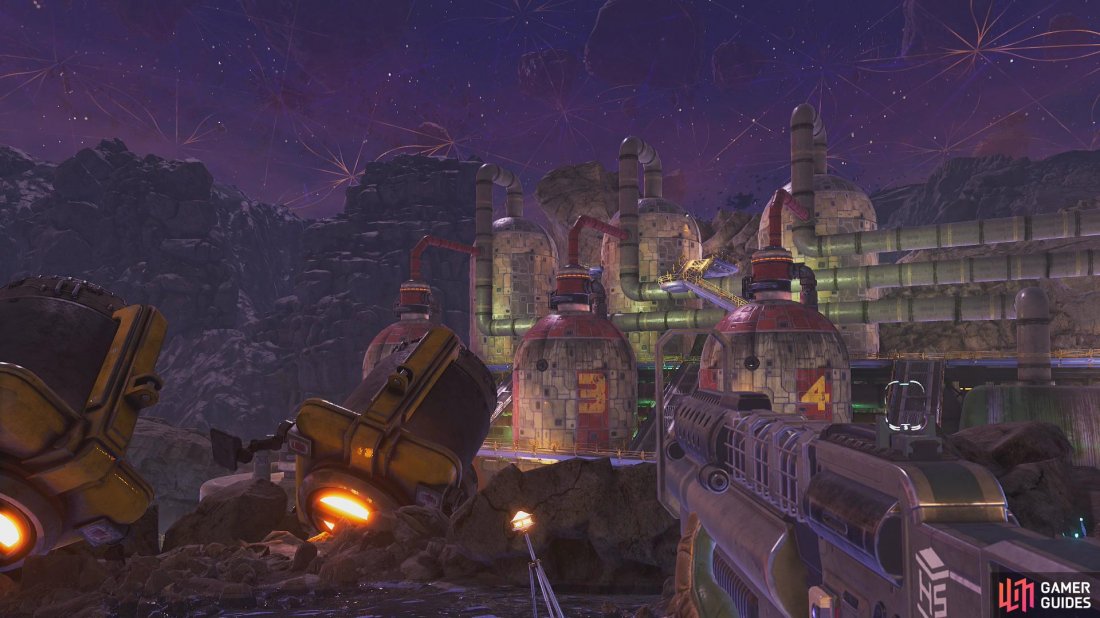
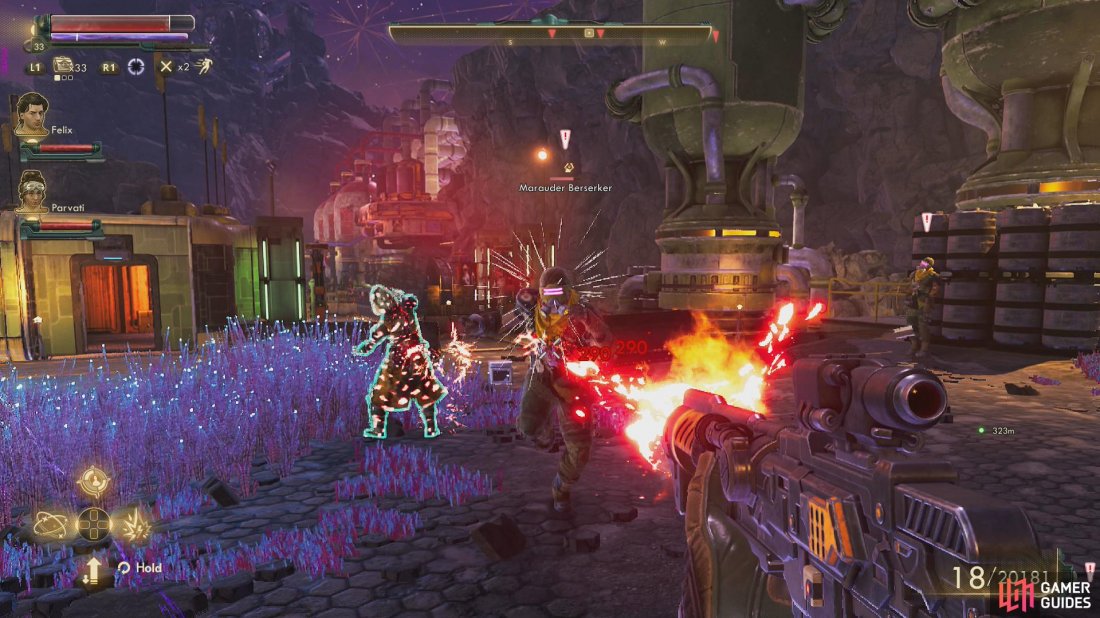
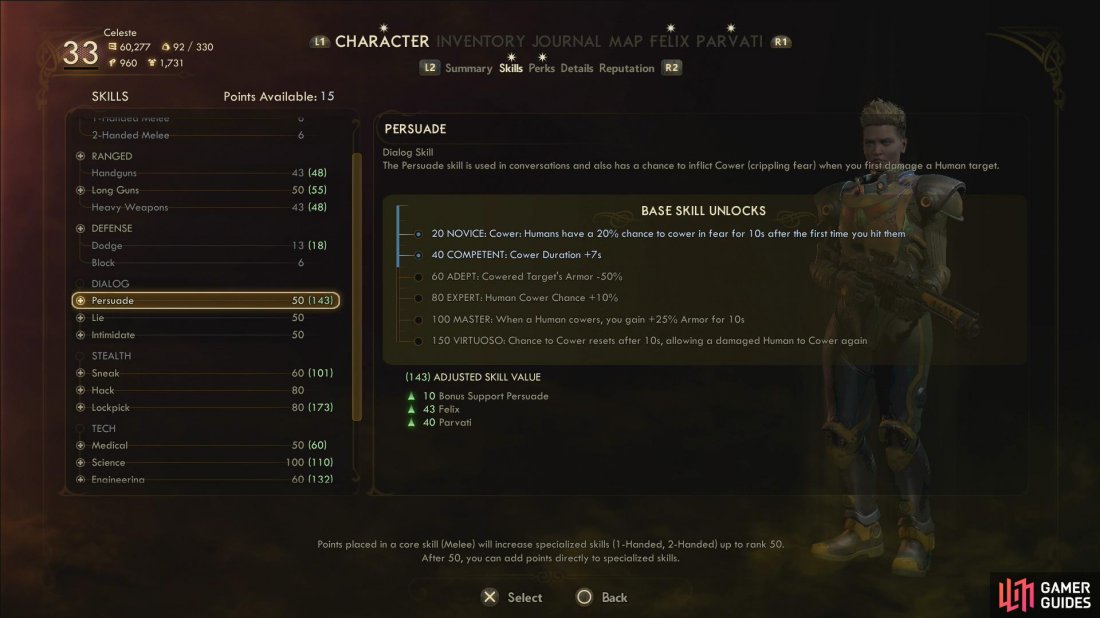
 Sign up
Sign up
No Comments